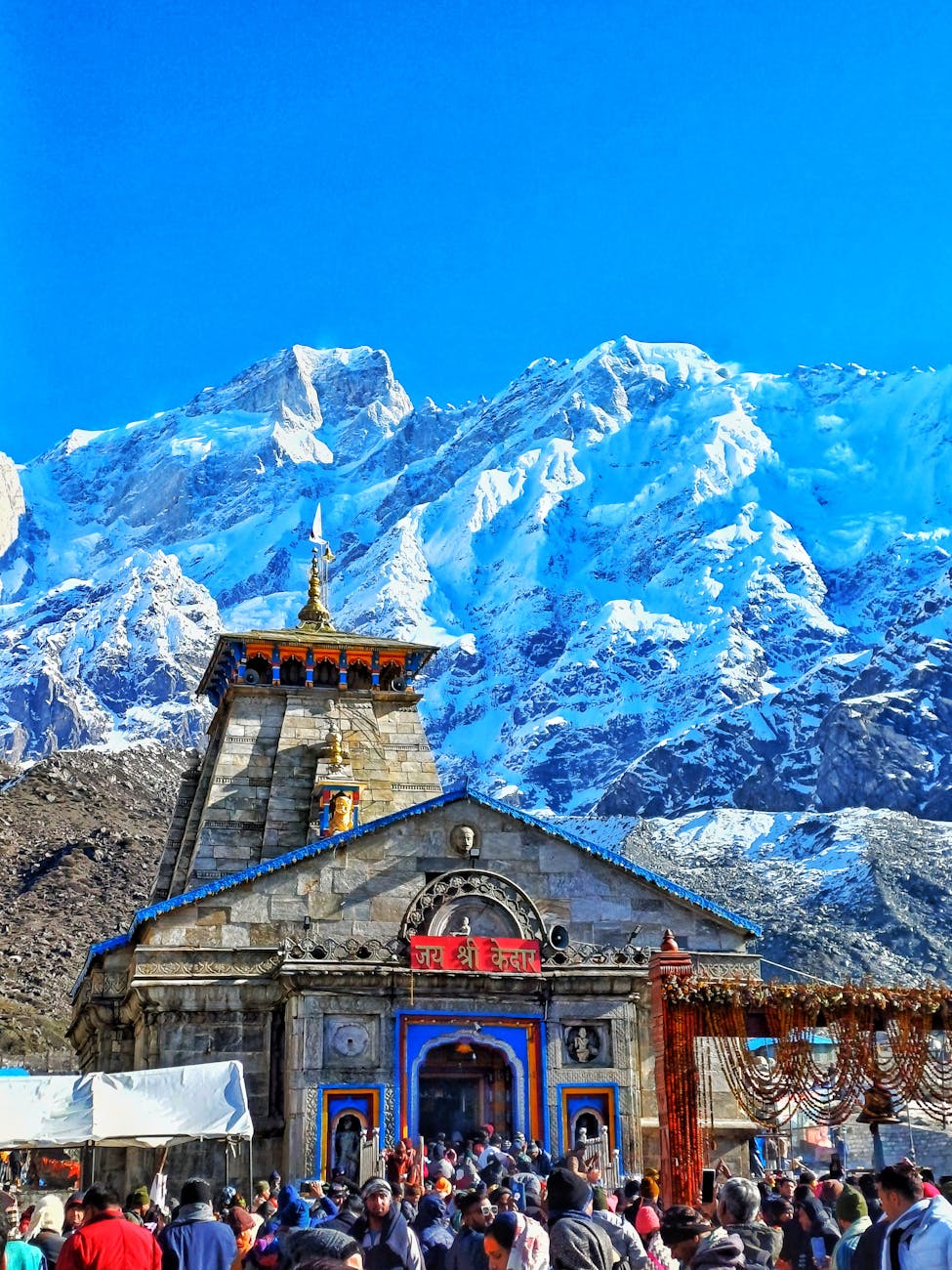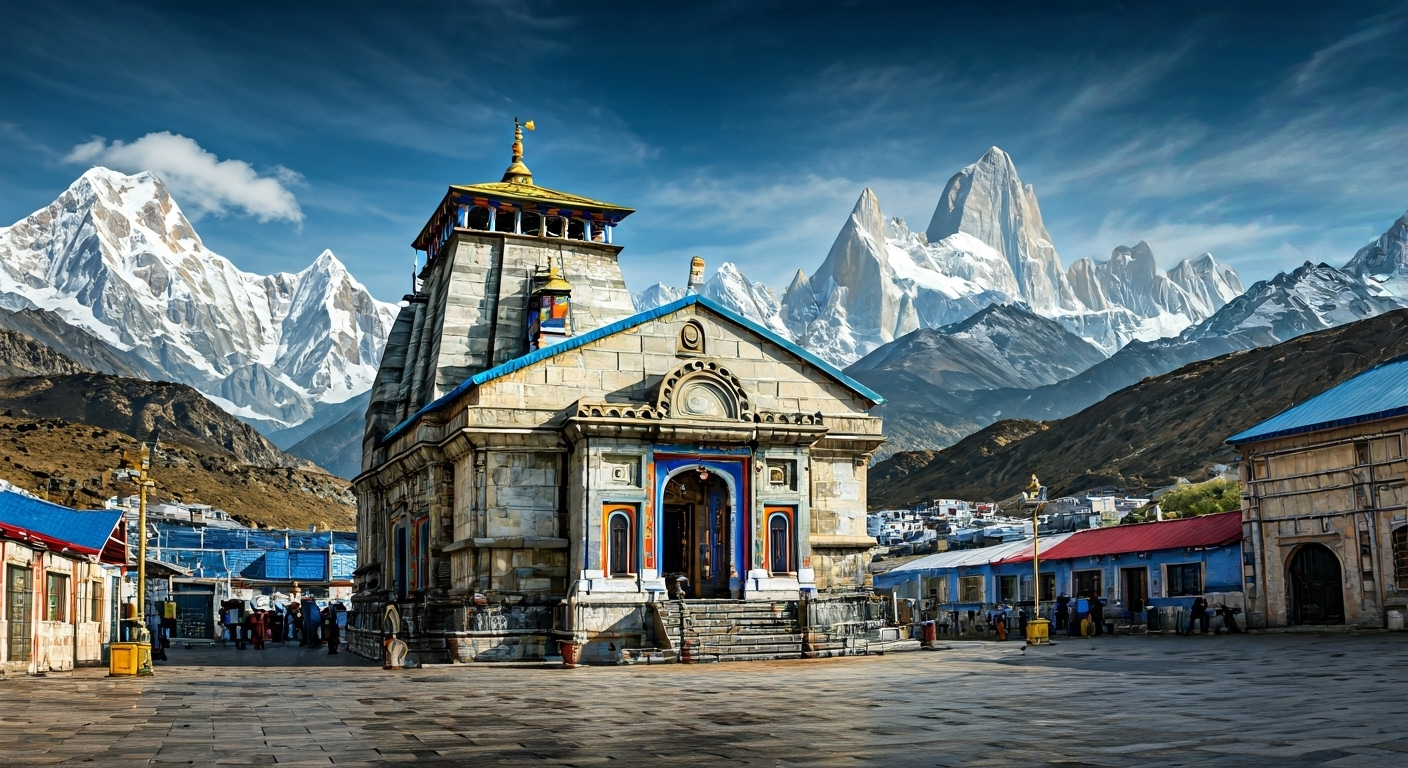
Kedarnath Best to Visit Key Highlights
- The Kedarnath trek is an unforgettable journey through the Garhwal Himalayas, featuring scenic landscapes and spiritual significance.
- The best time to visit Kedarnath is from April to June, offering pleasant weather and fewer risks of harsh conditions.
- Part of the Char Dham Yatra, the pilgrimage attracts millions during the peak season for darshan and spiritual activities.
- Helicopter services from Phata, Sersi, and other locations provide quicker access, especially during peak season.
- Weather conditions are unpredictable, with heavy snowfall and rainfall affecting accessibility and safety.
- Beyond the temple, visitors can enjoy local attractions, festivals, and the surrounding natural beauty.
Introduction
Nestled in the majestic Garhwal Himalayas, Kedarnath is not just a pilgrimage site; it is a spiritual experience that captures the essence of devotion. Renowned for its stunning Kedarnath Temple, dedicated to Lord Shiva, this sacred location holds immense historical significance. The temple, believed to be built in the 12th century, is part of the revered Char Dham Yatra, drawing thousands of devotees and nature lovers alike.
As one embarks on the Kedarnath trek, breathtaking views of the Mandakini River and surrounding peaks unfold. The journey to this high-altitude shrine during peak season is filled with cultural richness from nearby villages and local festivals. From the bustling town of Rudraprayag to the serene Kedarnath Dham, this destination epitomizes divine beauty and serene spirituality.
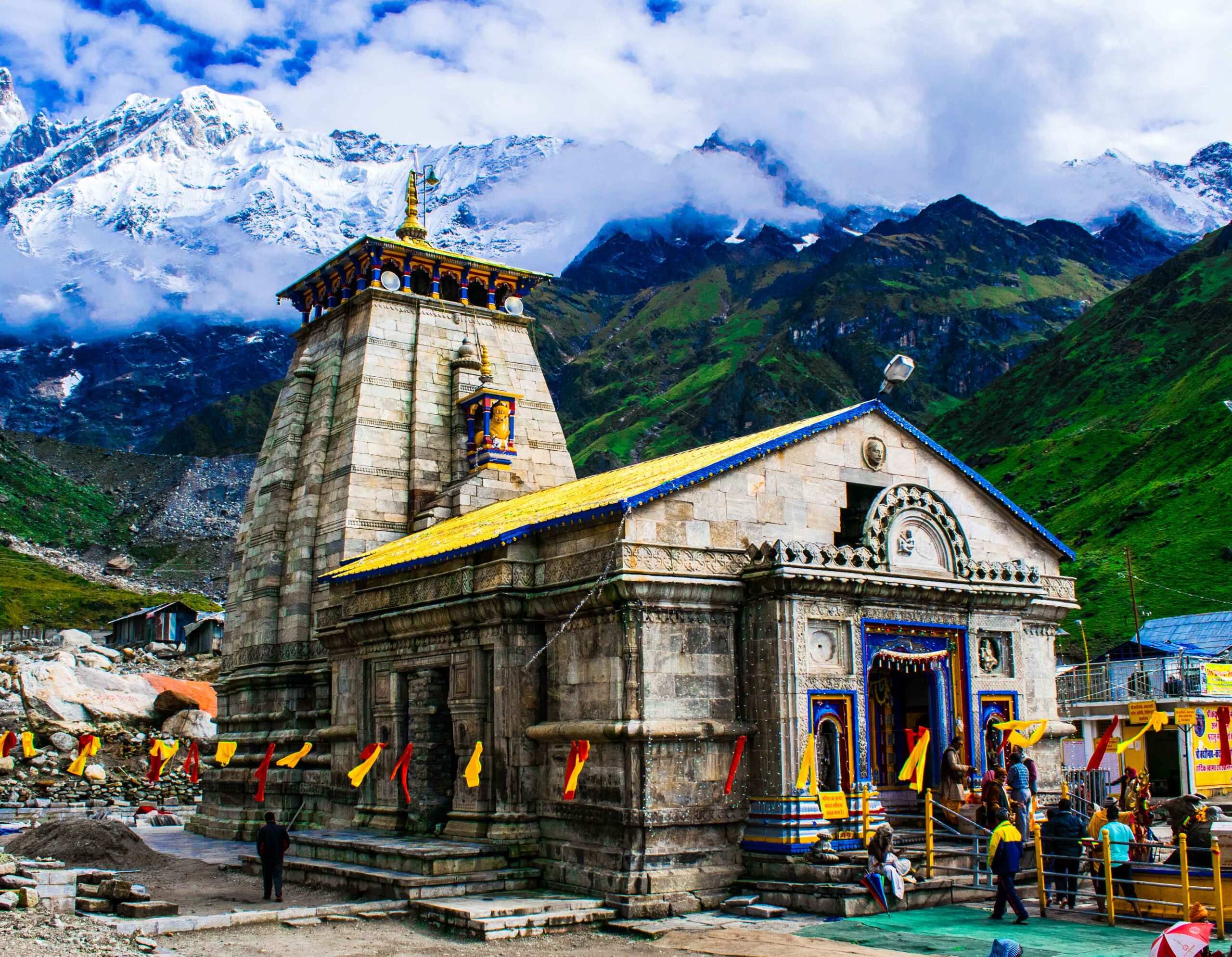
Overview of Kedarnath and Its Significance
Kedarnath holds a special place in the heart of devotees and adventurers alike. Its significance stems from its association with Lord Shiva, and it stands as one of the highly revered Panch Kedar temples. The Kedarnath Temple, constructed in the 12th century, resonates with rich history and spirituality, serving not only as a place of worship but also as a pilgrimage destination within the Char Dham Yatra. Surrounded by the majestic Garhwal Himalayas and the serene Mandakini River, this enchanting locale offers breathtaking views that attract nature lovers and trekkers.
Moreover, Kedarnath is steeped in folk legends, emphasizing its connection to the Pandava brothers, who sought blessings here. The overall ambiance, combined with the spiritual essence, makes Kedarnath an unforgettable destination for visitors seeking both adventure and divinity.
Historical and Spiritual Importance of Kedarnath
Its legacy is steeped in ancient traditions and captivating folklore, drawing pilgrims from around the globe. The Kedarnath temple, revered as one of the Panch Kedar temples, holds profound significance, dedicated to Lord Shiva—a testament to devotion that transcends centuries. Constructed in the 12th century, it showcases the architectural brilliance of the Garhwal Himalayas amidst breathtaking scenery.
The site is not merely a religious hub but a symbol of enduring spirituality, tied to the legends of the Pandava brothers, who sought redemption here. The temple’s proximity to the Mandakini River enhances its spiritual allure, offering serenity to visitors seeking solace. Each pilgrimage, particularly during the char dham yatra, resonates with deep historical roots and vibrant cultural narratives, enriching the journey of every devotee.
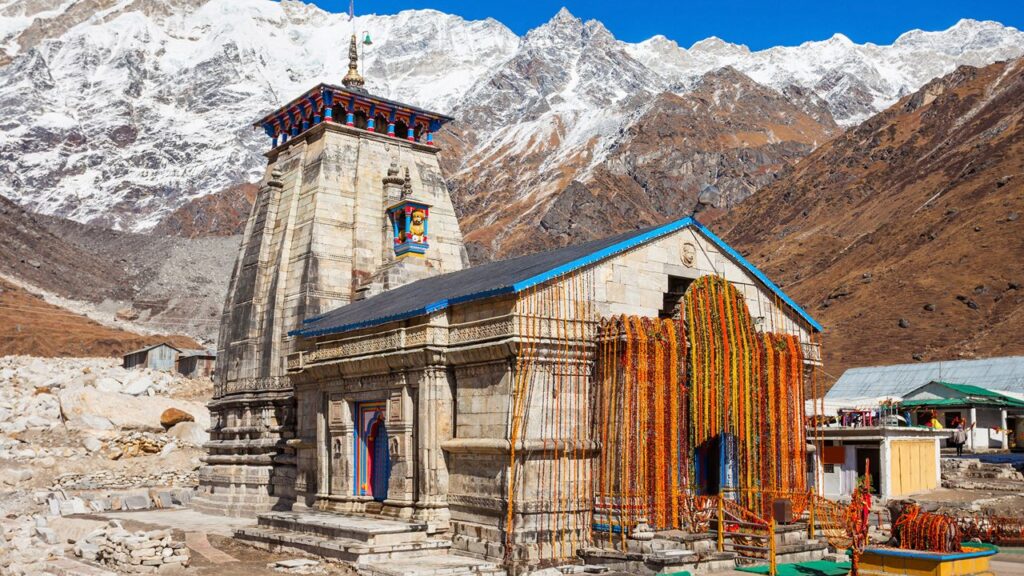
Unique Features of Kedarnath Temple and Surroundings
Set against the majestic backdrop of the Garhwal Himalayas, the Kedarnath Temple stands as an architectural marvel with profound spiritual significance. Dating back to the 12th century, it is not only one of the Panch Kedar temples but also a key pilgrimage site for devotees of Lord Shiva. The temple’s unique structure, built from large, heavy stones, showcases ancient craftsmanship that has withstood the test of time and extreme weather.
Surrounding the temple, the breathtaking landscapes, including the Mandakini River, enhance the spiritual atmosphere, drawing nature lovers and trekkers alike. The Kedarnath trek offers captivating views and is a crucial part of the Kedarnath Yatra experience, blending adventure with spiritual exploration. Other notable features include the Bhairavnath Temple, adding to the spiritual tapestry woven around this sacred site.
Understanding the Pilgrimage Season in Kedarnath
The pilgrimage season surrounding this revered destination is a dynamic period filled with spiritual fervor and natural beauty. Open from the months of April to November, the Kedarnath temple witnesses a surge of pilgrims during its peak season. Visitors often plan their kedarnath yatra around auspicious dates, aligning their visit with celestial events such as full moons. Given the high altitude and proximity to the majestic Garhwal Himalayas, weather conditions can fluctuate. Heavy rainfall or snowfall can impact travel plans, making it crucial to monitor forecasts. Those seeking the thrill of the kedarnath trek should consider timing their journey to avoid the extremes of winter, ensuring an enriching experience amid the stunning landscapes that surround the sacred shrine.
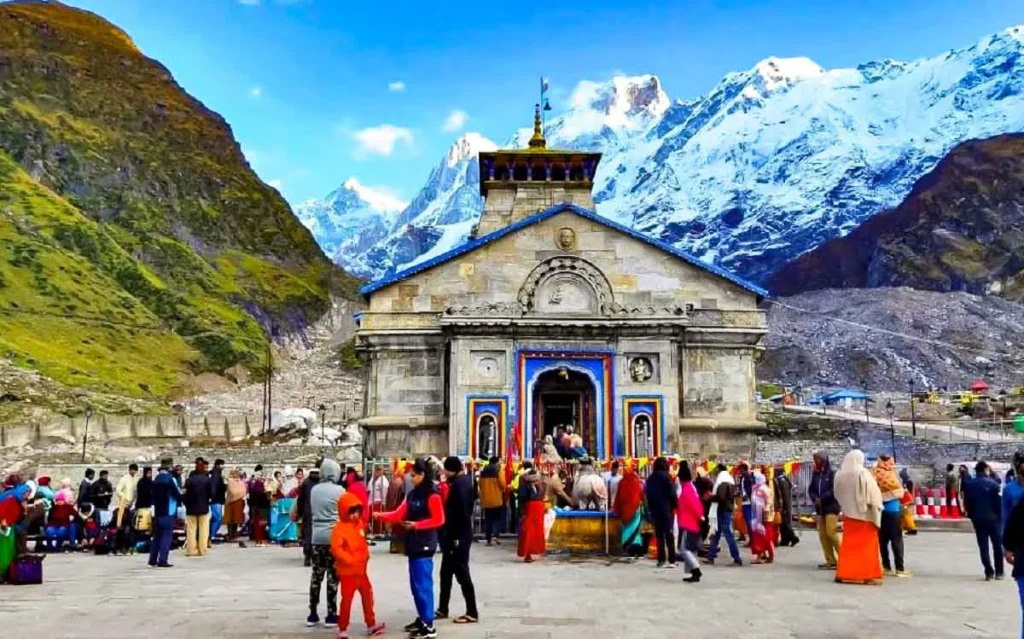
Temple Opening and Closing Dates
The opening and closing dates of the Kedarnath Temple are pivotal for pilgrims planning their visit. Generally, the temple opens in the month of April, coinciding with the onset of spring, when the severe winter season gives way to milder weather conditions. This period marks the peak season for the Kedarnath yatra, drawing thousands of devotees seeking blessings from Lord Shiva.
The temple typically closes just before the onset of heavy snowfall in late November, with a ceremonial event that holds deep cultural significance. During these months, the temple remains alive with pilgrims who traverse challenging trekking routes and engage in vibrant rituals. Visitors should keep an eye on the local announcements to gain insights into any changes due to extreme weather conditions or special occasions, ensuring a fulfilling spiritual experience.
Weather Patterns and Seasonal Changes
Weather conditions in Kedarnath are highly variable and can change quickly. From April to June, the region enjoys cool, pleasant weather, making it the safest window for most visitors. However, even during this period, evenings and nights remain cold due to the high altitude.
The monsoon arrives in July, bringing heavy rainfall and increased risk of landslides, often making trekking routes dangerous. Many roads can become impassable, and temple access may be restricted for safety reasons.
Come October, winter takes hold with heavy snowfall that blocks the trekking paths and closes the temple for six months. If you plan your journey, always check for weather updates, pack accordingly, and be ready for sudden changes in temperature or precipitation.

Best Times to Visit Kedarnath for Beginners
Timing your Kedarnath trip is the key to a smooth and enjoyable pilgrimage, especially for beginner travellers. The best time is during the months of April to June, when the weather is comfortable and the trekking route is most accessible.
As the peak season draws large crowds, those seeking a quieter experience may aim for early or late in the pilgrimage window. Smart timing ensures you can manage both the crowds and climate, maximising your comfort and spiritual satisfaction.
Ideal Months for Pleasant Weather
The months of April, May, and June are considered the best period to visit Kedarnath Dham. These summer months deliver a perfect balance of manageable temperatures and scenic vistas, making treks safer and more enjoyable.
- April marks the beginning of the pilgrimage season, with fresh snow still visible on the peaks and clear skies.
- May and June offer slightly warmer conditions, ideal for sightseeing and exploring the best places nearby, such as Gaurikund and Bhairavnath Temple.
Choosing these months means avoiding the risks of heavy rainfall or extreme cold. If you hope for a peaceful trek and vibrant natural beauty, this window is the most reliable. “Kedarnath weather doesn’t get any better than in summer,” as many seasoned pilgrims agree.

Tips to Avoid Crowds and Harsh Conditions
Managing crowds and harsh weather is essential for a beginner-friendly Kedarnath experience. The following strategies can help you navigate the peak season:
- Plan your visit for late April or early June, just before or after the main rush of Char Dham Yatra pilgrims.
- Consider starting your Kedarnath trek early in the morning to beat both crowds and midday sun.
Avoiding the monsoon season (July to September) is crucial due to extreme weather and landslides. During the summer, stick to popular routes and keep a flexible itinerary. Pre-book accommodation and transport to ensure your journey is smooth, especially during busy periods.
Essential Preparations Before Your Kedarnath Trip
Before setting out for Kedarnath, making the right preparations ensures a safer and more comfortable journey. From assembling an effective packing checklist to gathering all required documents, every detail matters.
Health tips are equally vital; the high altitude and unpredictable weather mean you must be well-prepared physically and mentally. A little groundwork goes a long way in making your visit stress-free and memorable.
Required Documents and Permits
Proper documentation is a must for all pilgrims. The state requires every visitor to register for the Char Dham Yatra, either online or at designated counters en route.
- Carry a government-issued official ID (Aadhaar card, passport, or voter ID).
- Complete the yatra registration process and keep digital and physical copies.
- Secure any trekking permits if you plan to explore routes beyond the main temple path.
Always keep your permits handy as they may be checked at multiple points. This not only ensures your safety but also assists authorities in case of emergencies. These steps help meet legal requirements and provide peace of mind for first-time travellers.

Packing Checklist for Different Seasons
Packing smartly depends on the time of year you choose to visit. For the summer months, focus on layers to handle fluctuating temperatures.
- Warm clothing, thermal wear, and windproof jackets are essential, as nights remain chilly even in summer.
- Sturdy trekking shoes and a rain jacket or poncho help you tackle sudden showers and rough terrain.
- Bring a hat, gloves, and sunglasses to protect against sun and cold.
- Pack a basic first aid kit, torch, dry fruits, and energy bars for the trek.
During the winter or monsoon season, add extra waterproof gear, woollen gloves, and spare socks. Remember, your comfort and safety depend on thoughtful packing suited to Kedarnath’s extreme weather.
Step-by-Step Guide: How Beginners Can Plan a Kedarnath Visit
Planning a successful Kedarnath pilgrimage as a beginner calls for a clear strategy. Start with research and proper bookings, then focus on the logistics of the trek and personal preparedness.
This guide breaks down each step, from selecting the best time and route to arranging accommodation and meals, ensuring your experience is as smooth and spiritually uplifting as possible.
Step 1: Selecting the Right Time and Gathering Information
Begin by identifying the best time for the Kedarnath yatra. The pilgrimage season, stretching from April to June, is when conditions are most favorable.
- Gather up-to-date information on weather patterns for your intended period.
- Check official temple opening and closing dates as they change yearly.
Use reliable sources and official tourism websites for accurate updates. This groundwork not only ensures safety but also lets you tailor your journey to match your comfort and interests. Early research helps you make informed choices on everything from trek routes to health precautions.
Step 2: Choosing the Best Route and Booking Transport
Your journey to Kedarnath starts at the last motorable point, Gaurikund. From here, the 16 km trekking route is the standard path, but alternative options exist.
- Helicopter services from Phata, Sersi, and Guptakashi offer quicker access for those with limited time or mobility.
- The nearest railway station is Rishikesh, and Jolly Grant Airport in Dehradun is the closest airport for air travellers.
Book your transport and helicopter tickets well in advance, particularly during peak season. Whether you trek or fly, always choose routes that are safe and recommended for weather conditions at your time of visit.
Step 3: Arranging Accommodation and Meals
Securing accommodation early is wise, as choices fill up quickly during the yatra. Options range from basic guesthouses to more comfortable stays in major cities en route.
- Budget hotels and dharamshalas in Gaurikund and Sonprayag cater to most pilgrims.
- Some premium guesthouses and tented camps are available at higher rates for added comfort.
Meals are usually simple, vegetarian, and widely available at lodges and waypoints. Booking both accommodation and meal plans ahead of time guarantees you a place to rest and refuel during your spiritual journey.
Step 4: Preparing Physically and Mentally for the Trek
The Kedarnath trek is physically demanding due to steep paths and high altitude. Start your preparations weeks before departure.
- Engage in regular walking, jogging, or stair climbing to build stamina.
- Acclimatise to higher elevations if possible by spending time in hilly regions.
Mental readiness is just as important. Expect challenging conditions, practice patience, and cultivate flexibility in your plans. First-time travellers should remember that a positive attitude, along with physical conditioning, is key to enjoying the journey and reaching the temple safely.
Step 5: Safety Measures and Health Tips for the Journey
Health and safety must be prioritised, especially with Kedarnath’s unpredictable weather.
- Carry a personal first aid kit with altitude sickness medication and basic supplies.
- Know the locations of medical facilities along the trek; basic healthcare is available at Gaurikund and some points en route.
Stay hydrated, eat light meals, and monitor your body’s response to altitude. In case of sudden illness or fatigue, seek help without delay. Weather conditions can change rapidly; always follow local guidance and never trek alone, particularly in foggy or rainy situations.
Top Attractions and Activities Beyond Kedarnath Temple
Kedarnath offers much more than the temple alone. For nature lovers, the region reveals some of the best places and activities in Uttarakhand, from tranquil lakes to vibrant festivals.
Exploring these attractions, you’ll uncover a rich cultural tapestry and breathtaking Himalayan scenery, making your pilgrimage a broader journey of discovery and joy.
Scenic Spots and Trekking Routes Near Kedarnath
A visit to Kedarnath unlocks a range of beautiful spots and treks:
- Bhairavnath Temple lies just 500 metres away, with panoramic Himalayan views and a peaceful atmosphere.
- Gaurikund is the base camp for the Kedarnath trek, featuring natural hot springs and mythological significance.
Nature lovers can also hike to Vasuki Tal, a pristine high-altitude lake surrounded by snow-capped peaks. The trek to Chandrashila via Tungnath offers some of the most spectacular vistas in the Garhwal Himalayas, making it a favourite for both pilgrims and adventurers. These routes provide a unique mix of spirituality and natural wonder, far beyond the temple itself.
Local Festivals and Cultural Celebrations
Kedarnath’s local festivals offer a glimpse into the vibrant culture of Uttarakhand. Celebrations here are rooted in folk legend and tradition, making certain times especially memorable for visitors.
- Maha Shivaratri is marked by grand rituals, music, and processions, drawing devotees from across India.
- The Badri Kedar Festival in June features performances by local artists, showcasing the region’s artistic heritage.
Other cultural events, like the Shravani Annakoot Mela and Vinayak Chaturthi, deliver lively processions and temple decorations. Attending these festivals connects you to the heart of Kedarnath’s spiritual community and provides an unforgettable addition to your pilgrimage.
Accommodation Options for Every Budget in Kedarnath
Accommodation choices around Kedarnath cater to every budget, ranging from simple guesthouses to premium stays in nearby towns. Planning ahead ensures you find a place that suits your needs and preferences.
Whether you seek a basic shelter for a night’s rest or a more comfortable retreat before or after your trek, there are options to match every traveller’s budget and expectation.
Budget Stays and Guesthouses
Budget-conscious pilgrims will find a variety of simple guesthouses and dormitory-style lodges in Gaurikund, Sonprayag, and Kedarnath town itself.
- Dharamshalas and ashrams provide affordable shared accommodation for yatra participants.
- Early booking is essential during the peak season to secure a bed in these popular lodges.
Basic bedding, vegetarian meals, and common washrooms are standard. While amenities may be minimal, the warm hospitality and supportive environment make these stays perfect for first-time and solo travellers seeking affordability and community.
Mid-range and Premium Accommodation Choices
If you prefer more comfort, mid-range and premium guesthouses and hotels are available in major cities like Guptakashi and Phata, as well as select tented camps near Kedarnath.
- Private rooms, attached bathrooms, and meal plans are typically included in these stays.
- Some premium options offer additional conveniences such as hot water, room heating, and even guided tours.
While these accommodations come at a higher price, they provide valuable respite after a demanding trek. Booking through official channels or reputable tour operators ensures quality and peace of mind during your stay.
Conclusion
In conclusion, a visit to Kedarnath can be a transformative experience for beginners, offering a blend of spiritual significance and breathtaking natural beauty. By understanding the key highlights, timing your trip wisely, and preparing adequately, you can ensure a rewarding journey. From the majestic Kedarnath Temple to the captivating trekking routes, every aspect of this pilgrimage is designed to enrich your spirit and connect you with nature. Remember that thoughtful planning—whether it’s securing necessary permits, packing appropriately, or being aware of seasonal changes—can make all the difference. If you’re looking for personalized advice or support in planning your trip, don’t hesitate to reach out for a free consultation to get started on your Kedarnath adventure!
Frequently Asked Questions
What are the temple timings during peak season?
During the peak season, Kedarnath Temple typically opens at 4:00 AM and closes around 9:00 PM. It is advisable to arrive early to avoid crowds and ensure a smoother darshan experience, as peak hours can get quite busy due to high visitor turnout.
What are some must-carry essentials for beginners?
For beginners visiting Kedarnath, essential items include sturdy trekking shoes, breathable clothing, a rain jacket, water bottles, and basic first-aid supplies. Don’t forget snacks for energy and a power bank to keep your devices charged during the journey. Prepare well to enhance your experience!
Are there medical facilities available during the trek?
Yes, various medical facilities are available during the Kedarnath trek. There are health camps and emergency services located at key points along the route. Trekking agencies also recommend carrying a basic first-aid kit for minor ailments or injuries while on your journey.
What makes visiting Kedarnath during festivals special?
Visiting Kedarnath during festivals immerses you in vibrant celebrations filled with spirituality, traditional rituals, and cultural performances. The atmosphere is electrifying, attracting pilgrims and tourists alike, creating a unique opportunity to witness the temple’s grandeur alongside lively festivities that enhance your overall experience.

